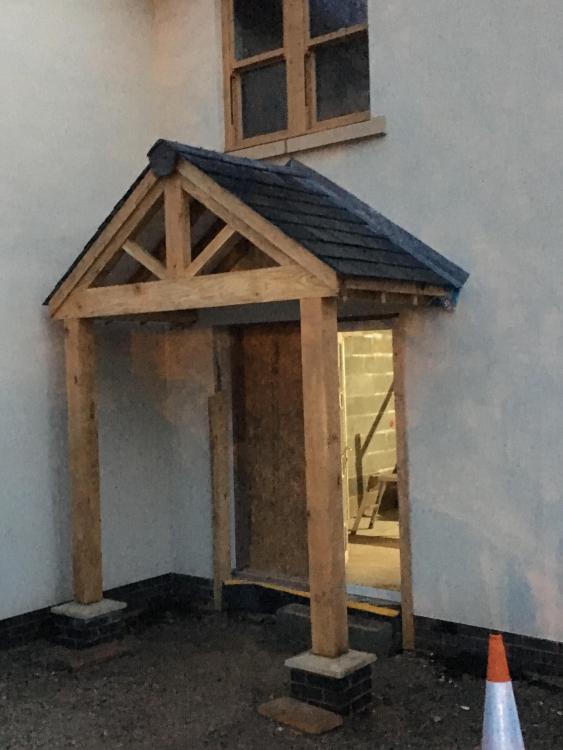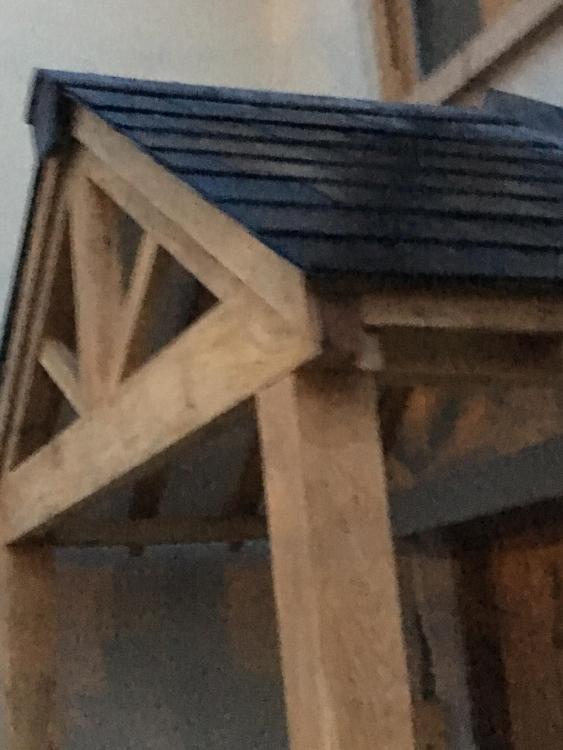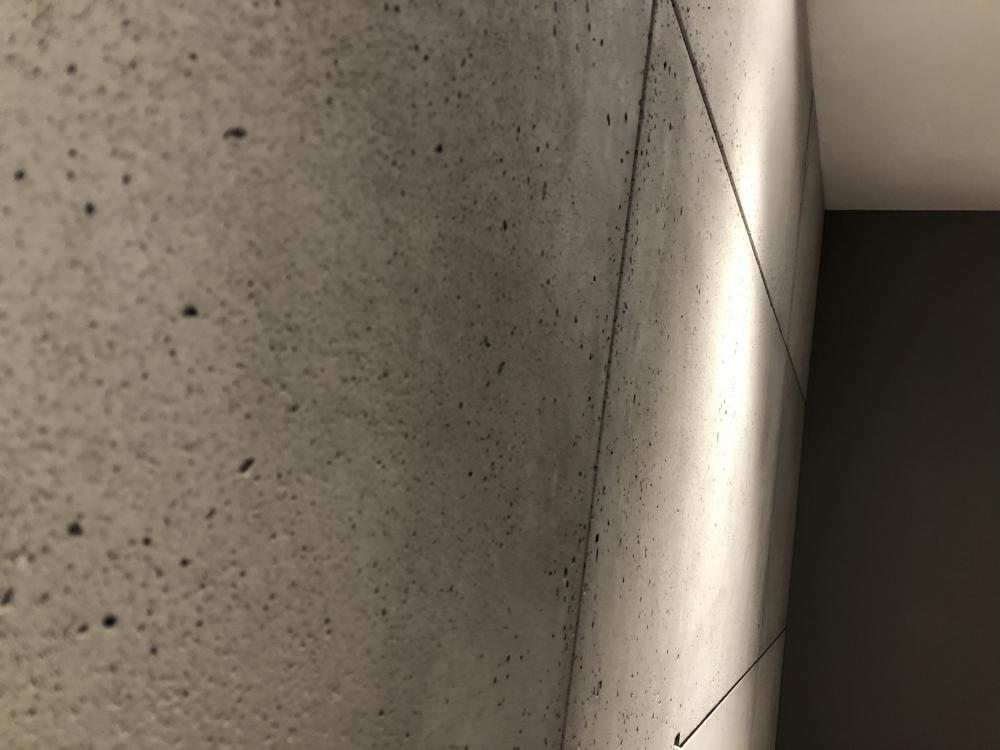Leaderboard
Popular Content
Showing content with the highest reputation on 01/20/18 in all areas
-
3 points
-
2 points
-
These people are who we sourced our panels from - they do some nice bits... http://www.3dartfactory.co.uk/decorative-concrete-2/1 point
-
The cost in building valleys is in the joinery rather than the leadwork. A 6m roll of 450mm will set you back about £100 all in, the valley rafters and associated timber boards etc will be your cost. Are you planning a cut roof or a truss roof..? And are you planning on built in solar panels..?1 point
-
I would be totally guessing on the cost difference, but that design is much more attractive, so you might gain some of it back via a higher valuation. You can offset some of the cost by losing the stepped in area above the front door. This loses a steel required to hold up the outside wall and allows you probably an extra cupboard in the home office or at least more floor space. You will lose a lot of brickwork and render from the much lower gables, but you gain an extra gable. There will also be extra trusses although they will be smaller. £5-10k seems like a good guess, why not ask a roofing contractor for quotes.1 point
-
http://webapp3.bosch.de/etk/servlet?cmd=show_assemblyparts&sid=SID5873000281243475292971958563631781139&init=&parentid=379417241 point
-
1 point
-
1 point
-
That wasn't what caused the problems with Ebuild at all, nothing untrue was posted, and allowed to stay up for more than a minute or two before being moderated, AFAIK, but it's probably wise to only name a company that's provided poor service once you've come to the end of the road with all other forms of resolution, just in case. My personal view is that there is nothing wrong with telling something as it is, as long as it's 100% factual, with no embellishment. I think one problem with the naming and shaming lark is that it's just too easy to let natural emotional involvement get in the way of the raw facts - we all do it at times. I had a couple of iffy contractors, and have spoken of them but not named them, as neither really cost me a significant amount of money. On the other hand, I had appalling service from Santander, who reneged on a mortgage agreement at the last moment, and I have no problem with naming them in my blog. Similarly, I'm not the only one here who has been critical of Buildstore, with their high fees and very little in the way of added value with the self-build products. Most can get a better deal by going direct, particularly with insurance.1 point
-
Don't forget to include the savings from offsetting the energy you won't be buying. That could be more than 20p/kW·h on a no- or low-standing-charge tariff, which dwarfs the FIT's 6.445p.1 point
-
It's not wholly true to say the FIT has reduced to 4p per kWH. The current rate for sub 10 kWp systems is 3.93 per kWh generated, plus an export payment of 5.03p per kWh for half the generated energy, unless you have an export meter fitted. With an export meter you still receive 3.93p per kWh for every kWh generated, plus 5.03 kWh for every kWh exported to the grid. This can alter the dynamics of the payback significantly if you export a high proportion of your generated energy. It's also worth noting that FIT payments are indexed linked to the RPI, not the CPI, for the guaranteed period. This means that the 3.93p rate will increase by 4.1% in April.1 point
-
We are not DIY builders so would need to hire someone to install anyway. have considered something like a SunAmp to use excess electrictiy during the daytime but may not need it with the ASHP1 point
-
I have stated my view several times, that I think it is worth it as a cheap DIY install and not claiming the FIT. I am no longer convinced it is worth paying the premium for an MCS registered company to install them in order to claim the FIT. My model relies on you being able to use near 100% of what you generate, be that gig appliances in the daytime, excess dumped to water heating or even battery storage.1 point
-
Can we please separate out P2P lending from crowdfunding? The two are totally different concepts, and I fear there may be confusion here between them. Crowdfunding Crowdfunding is solely a means of raising capital, with no absolute obligation on the recipient to pay anything back at all. It is primarily used to provide investment for start-up companies, where initial investors may receive a reduced price product in return for their investment (assuming the company gets off the ground), and more recently has been adopted as a way of raising non-refundable donations for specific charitable cases (like sending a person to another country for medical treatment not available in the UK). It is not a lending or borrowing scheme in the usual way we would understand such a thing, and anyone who invests in a crowdfunded project has to treat it like any other high-risk investment or donation and not expect to ever get their money back. There are exceptions, but this is generally how crowdfunding works. In terms of self-build and renovation, I can see a place for crowdfunding a start-up company that has come up with a product or service that looks to be beneficial to self-builders. I cannot possibly see how crowdfunding could be used as a substitute for a lending scheme, like a conventional mortgage or loan. P2P (Peer to Peer)lending and borrowing P2P is a means that allows usually small investors to invest money at an agreed rate of return to borrowers that they choose. It's a logical extension of the principle of informally lending a friend some money for a time and then getting it back, with the difference that P2P almost always carries some interest with that borrowing, although often far less than that charged by conventional lenders. P2P also allows groups of investors to amalgamate a number of small investments in a single project, but this is the only similarity with crowdfunding, and is, I think, where some confusion may result. The key difference is that with P2P there is a formal agreement that the investor will get their investment back after a defined period of time, plus an agreed level of interest (usually, there are schemes that operate within Islamic law that get around the issue of interest, as interest is haram in Islam). In my view, I think we need to dismiss crowdfunding, in the context of individuals who are self-building or renovating and looking to borrow money. What we should concentrate on are P2P models, how they operate, how the agreements are structured, what the typical investment return should be, how the organisation of investors and borrowers is arranged, and, most importantly, how the law and financial regulation applies to such agreements that are made outwith the normal regulated environment of the banks and building societies. I don't want to make an issue of this last point, as we already have schemes, like car personal lease plans, that similarly fall largely outside FCA regulation, so it is not, in my view, a show stopper.1 point
-
Just thought I'd update this thread with some real life observations now our own SIPS house is in place. Really surprised at the comment above re 1st floor being supported *on* top or inserted into the panels - they should really be using joist hangers so there's no penetrating the structure at all.This is kind of fundamental to take advantage of all that insulation really. Even where we had to have steels in because of some.large spans they've cleverly been terminated without going through the wall (big strong upstands on massive timbers) The only things that go actually through the construction of our SIPs (done by clays) inside to outside (that is to say exposed in the 55mm cavity between the sips and the stone outer wall or under the roof slates) are 2 beams where we have a very large roof window I believe called a cabrio?) which needed that extra support, and ditto on our really large dormers, which would not be a feature in a normal 2 storey. However, even then since we are applying a layer of insulation inside too, nothing in fact will be cold bridging dorectly into the interior of the house. We certainly don't have any of those massive timbers referred to acting as cold bridges. There are large timbers involved but have quite cleverly been designed to be *within* the envelope. As for gaps, so far the only air gaps we have been able to discover were some timy ones between the sole plate/DPC and the thermal blocks it is sat on - and I think they were down to slight irregularities in the blocks/block laying actually. But these were sealed and we've gone over it all ourselves again and silicone the edges above and below the DPC even though it wasn't really necessary. Similarly since we'd bought boxes full of sealant, we sealed all the joins in the panels ( which was pointless to be honest as I saw how they were sealed together but attention to detail seems to be key, and I've tried to provide jobs that everyone in the family can feel part of available for them to do) Where you may see expanding foam used is I watched when they fastened the panels together - talk about thorough... the panels were spline joined, so no big timber cold bridges (the splines also being SIPS themselves), and they "glued" the insides first with low expansion sticky type foam, then the panels were pulled together under a lot of pressure with a device that reminds me of a fence tensioner, so a lot of the foam squeezed out at the joins of course then literally about 100 nails were fired in each edge( I stopped counting at 100. I reckon those house must weight an extra ton from all the nails ?) I was quite genuinely amazed how thorough the guys were - particularly when we got torrential rain and they were literally soaked to the skin through their waterproofs even. Needless to say, there's not been a lot of gap finding to do despite us going over quite literally every mm of join - but I do have to say that the guys were unbelievably thorough, I mean to a degree *way* beyond my expectations and possibly not all firms will be quite so exacting. I also think bridging from big timbers had been thoroughly thought about, because you *could* build it in a simpler faster way for the builder, but have those timbers bridging between the cavity and the interior. I think our checking out of the various firms for a few months paid off. One thing I have noted is that the breather membrane touted as waterproof for up to a few weeks has not stood up to some of the heavy rain we've had amd has definitely let water through... but the roofers started today and being a belt-and-braces type is actually felting over the lats too! So even if we lost a slate at some point in the future there would be 2 layers in fact between the outside and the osb face.1 point
-
0 points






